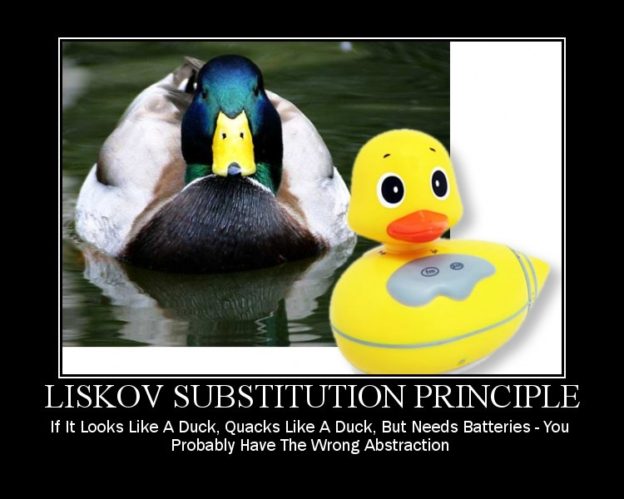Liskov’s Substitution Principle
Previous Principle: Open Close Principle
Let q(x) be a property provable about objects of x of type T. Then q(y) should be provable for objects y of type S where S is a subtype of T.All it is saying that, Any method which is using a reference of base class can use any child class object without knowing it.
or
In other words, A subclass should override the methods of parent class in such way that does not break the functionality from a client point of view.
or
If a method is using the Base class then the reference to the Base class can be replaced with a Derived class without affecting the functionality of the method.
A classic problem of Likov’s Substitution Principle is Rectangle and Square, as we know a Square is-a Rectangle so we will try to establish an IS-A relationship using inheritance like below:
public class Rectangle {
private int length;
private int breadth;
public int getLength() {
return length;
}
public void setLength(int length) {
this.length = length;
}
public int getBreadth() {
return breadth;
}
public void setBreadth(int breadth) {
this.breadth = breadth;
}
public int getArea() {
return this.length * this.breadth;
}
}
// Here we're trying to have is-a relationship.
public class Square extends Rectangle {
// Breadth and Height is same in Square
@Override
public void setBreadth(int breadth) {
super.setBreadth(breadth);
super.setLength(breadth);
}
@Override
public void setLength(int length) {
super.setLength(length);
super.setBreadth(length);
}
}
Now let’s assume we have a client method calculateArea which takes Rectangle as parameter and have test cases based on Rectangle class like following.
public void calculateArea(Rectangle r) {
r.setBreadth(2);
r.setLength(3);
// From the code, the expected behavior is that
// the area of the rectangle is equal to 6.
assert r.getArea() == 6 : "Error in calculating area";
}
What will happen if we pass a Square object to this method? The test case will fail as it will give us an output 9 for Square. So here the Likov’s Substitution Principle violates.
So here cannot be an is-a relationship between Square and Rectangle. What is the problem with is-a relationship here?
Squaredoesn’t need Height and Breadth, as the sides of Square are equal so it is a wastage of memory.- To work appropriately the client (In this case
calculateAreamethod) need to know the details of derive classSquare, for this we have to change the client code which breaks theOpen Close Principle.
So this principle make sure that new Derive classes are extending the Base class without changing their behaviour.
 End to End Technology Solutions
End to End Technology Solutions
